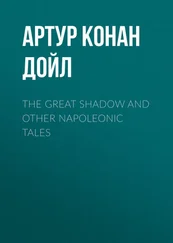Metal nanoparticles such as silver (Ag), copper (Cu), zinc oxide (ZnO), and titanium dioxide (TiO 2) have been studied for their antibacterial activities (Kah and Hofmann 2014). Nano TiO 2either alone or with zinc or silver was used against Xanthomonas sp., the causal agent of bacterial spot disease in roses (Paret et al. 2013a) and tomatoes (Paret et al. 2013b). Field (Paret et al. 2013a) and greenhouse (Paret et al. 2013b) studies showed that the severity of bacterial spot disease in rose plants was significantly reduced – in case of plants treated with TiO 2/Zn as compared to untreated control plants. Furthermore, TiO 2nanoparticles present in nanofertilizers reported to provide protection from bacteria (Sadeghi et al. 2017). In an in vitro study performed by Mondal and Mani (2012), it was observed that copper nanoformulation could reduce the growth of bacterial blight on pomegranate at 0.2 mg/L, a concentration which is much lower than the recommended dose of copper oxychloride (2500–3000 mg/L).
Different metal nanoparticles have been studied for their antifungal properties (Gogos et al. 2012). Silver nanoparticles have shown antifungal inhibition of Sclerotinia sclerotiorum , Alternaria alternata , Rhizoctonia solani , Macrophomina phaseolina , Curvularia lunata, and Botrytis cinereal by well diffusion assay causing infections in plants (Krishnaraj et al. 2012). Also, Silver nanoparticles showed antifungal activity against Aspergillus flavus , Aspergillus parasiticus , Fusarium solani , R. solani , Candida albicans , Candida glabrata, and Candida tropicalis (Asghar et al. 2018; Khatami et al. 2018). Chitosan nanoparticles have shown antifungal activities, such as controlling Botrytis bunch rot in grapes, Fusarium crown, root rot in tomato, and Phyricularia grisea in rice (Kashyap et al. 2015).
Metal nanoparticles such as Ag, Cu, ZnO, and TiO 2have been studied for their antiviral properties (Kim et al. 2018). Foliar application of silver nanoparticles on bean leaves caused complete suppression of sun‐hemp rosette virus (Jain and Kothari 2014). In another study, Elbeshehy et al. (2015) have shown that Vicia faba plants treated with the bean's yellow mosaic virus and sprayed with silver nanoparticles have achieved surprisingly better results 24 hours after infection compared with spray applications before or at the time of inoculation. Nanofertilizers which contained TiO 2nanoparticles were found to cause inactivation of viruses (Sadeghi et al. 2017). Gold nanoparticles were shown to dissolve the Barley yellow mosaic virus particles conferring resistance to the plant (Alkubaisi et al. 2015). Chitosan nanoparticles were found to increase viral resistance against the mosaic virus in snuff, alfalfa, potato, cucumber, and peanut (Malerba and Cerana 2016).
1.3.5 Advantages of Using Nanopesticides
From the results obtained by using nanopesticides in laboratory and field trials, the following advantages can be summarized (Bajpai et al. 2020):
1 Reduction of the required pesticide amounts and application rates, thus reducing costs of cultivation.
2 Enhanced efficiency due to controlled or slow release of active ingredients.
3 The availability of active ingredients for prolonged time which offers better control of insects and pests.
4 The biodegradable nature nanopesticides reduce environmental pollution.
1.3.6 Risks of Using Nano‐based Agrochemicals
Current research has revealed that the absorption, translocation, and accumulation of nanoparticles depend on various factors including the control of the microbial pathogen, plant parts, plant species and size, chemical composition, functionality, and stability of nanoparticle used (Raliya et al. 2015). Because the guidelines or protocols for quantification of nanoparticles within tissues are not yet clearly defined, the bulk of the data is generated for germination and cell culture. The present research discussion is more focused on the effect of nanoparticles on plants. But, the effect of application of nanoparticles to the next generation of plants exposed to nanoparticles is still not known (Mohamed and Abd‐Elsalam 2018).
On the other hand, the antimicrobial activity of nanoparticles against different microbes and plant pathogens is undeniable fact, but the effects of these nanoparticles on soil microflora are less documented, which attracts much attention from scientists. There are many gaps in our knowledge with regards to the toxicity of these nanoparticles to the environment and different ecological systems. The negative effects of nanoparticles were recorded on denitrifying bacteria which disrupts the process of denitrification in soil (Bajpai et al. 2020).
There is also an urgent need to feel safe about the nanomaterials' phytotoxicity when applied to crop plants, in addition to understanding the potential benefits of using the nanotechnology in agriculture. Therefore, the first step should be related to analysis of penetration of those particles into plant cells and the way in which they are transported. For the biosafety of nanomaterials, formulation stability is also an important feature (Adisa et al. 2019).
The increasing challenges for humanity and food security clearly demonstrate that there is a growing demand for more production with less input in agriculture. One of the main problems in food safety is the application of large quantities of microbial pesticides together with the presence of new microbial‐resistant strains. Also, the increased application of chemical fertilizers. That means the conventional farming practices are not able to control such threats adequately without putting human health at serious risk. Therefore, adoption of modern agricultural techniques and innovative technology is necessary so that such threats can more wisely and precisely controlled. In fact, nanotechnology is among the most advanced scientific methods in the area of agriculture and plant diseases management. Nanotechnology has a leading role in remodeling farming, and in the fight against plant microbes. The research of nanotechnology is already in its premature growth process after recent decades. All the action, however, is very wide and become popular day by day.
The rapid development and implementation of marketable formulations involving artificially designed plant protection nanoparticles has been driven by nanotechnologies in combination with biotechnology. Nanoparticles have proved to be a talented tool in this era to reduce indiscriminate use of unnecessary chemicals and toxins in plants. Specific nanomaterials with high antimicrobial/antiviral potential against pathogens have found to be advantageous and practical, whereas other nanoparticles have a deleterious effect in terms of plant reactivity and phytotoxicity. Therefore, we should be very careful when examining the type of nanomaterial needed for their implementation considering the concentration, physical, chemical, and accumulation properties. Otherwise, they could be a potential serious threat to the entire ecosystem. The effect of nanoparticles depends on several factors, and if their conditions vary, their results can easily and completely change. These factors mainly include type and concentration of the nanomaterials used, the chemical/biological surface coating agent, the age and type of the plant, and the target portion of tissue. Nanobiotechnological industries are now growing very quickly, and new nanofertilizers and antimicrobial nano‐based systems have been developed, but a long way to go to manufacture comparatively cost‐effective, safe, and environmentally friendly and stabilized nanomaterials; however, further extensive studies are also required on these issues. Moreover, it is important to make a broad‐based assessment of these nanomaterials within the food and agri‐food industry to gain public acceptance. In this way, the unlike challenges which faced genetically modified organisms worldwide will be avoided.
Читать дальше












